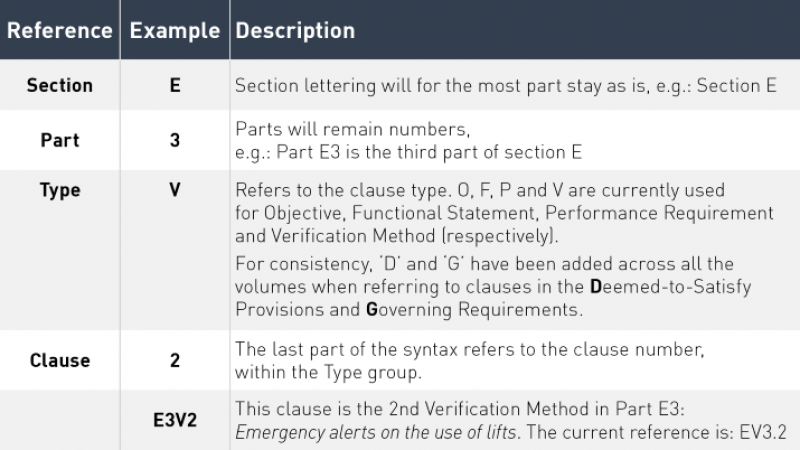Here’s what to expect with the code’s new referencing system, dubbed SPTC: ‘Section - Part - Type - Clause’.
As part of the ABCB’s commitment to delivering an NCC that is user-friendly, modern and accessible to practitioners at all experience levels, NCC 2022 comes with some important changes.
To support practitioners through these changes, the ABCB has developed a range of resources that explain how and why the NCC is changing, and what it means in practice. Keep an eye out for more detailed materials on each topic in the lead up to the release of the NCC 2022 Public Comment Draft in May 2021.
Why?
As part of the ABCB’s Readability Project, changes are being made to the code’s referencing system. The current NCC uses several different referencing systems, designed to mostly reflect the distinction between volumes, and between the different types of content within each volume. Amongst other benefits, a simpler and consistent referencing system will make the code easier for current and futures users to understand, and will enable digitisation.
What’s changing?
The ABCB undertook a great deal of research and consultation to develop the code’s new referencing system for NCC 2022. It will be referred to as SPTC, which reflects the new system’s referencing syntax (Section – Part – Type - Clause). Importantly, SPTC retains as much of the current NCC’s referencing system as possible, but more closely reflects the actual structure of the code.
As practitioners will already know, Volume Two of the current NCC uses a very different referencing system to that of Volumes One and Three. So the most logical way to ensure the code has a single and consistent referencing system throughout, is to align the Volume Two referencing system with that of Volumes One and Three. To do this the current Section H – Special Use Buildings in Volume One will be moved to Section I, which is currently empty having been removed several editions ago. This will enable Volume Two to be assigned ‘Section H’, with its seven Parts numbered from H1 to H7. The use of the letter H is also a helpful reminder for ‘Housing / Houses / Homes’, reflecting Volume Two’s focus. This also maintains the ability to easily distinguish between Volumes One and Two, which was a key reason for the original decision to use a different referencing system for Volume Two when it was first developed in the mid-1990s.
More detailed information on how SPTC works for specific areas of the code, such as for Specifications and the Governing Requirements, will be released in Supporting Documents in the coming weeks.
To assist practitioners in transitioning to the new referencing system, NCC 2022 will include the current (NCC 2019) numbering alongside the new references.
What will it look like?
The table provides an example of how SPTC will work in practice. As you can see, we have kept the Section, Part and Clause referencing system from Volumes One and Three, and moved the Type to a more logical position, in most cases, simply replacing the decimal point. Introducing a letter to indicate ‘Type’ also means the status of any clause can be easily discerned.

What’s next?
Keep an eye out for a whole range of resources being released over the coming weeks and months, which provide more in-depth information on each of the key changes to NCC 2022. But if you have a question or concerns in the meantime, please get in touch with us at NCCOnline-feedback@abcb.gov.au.